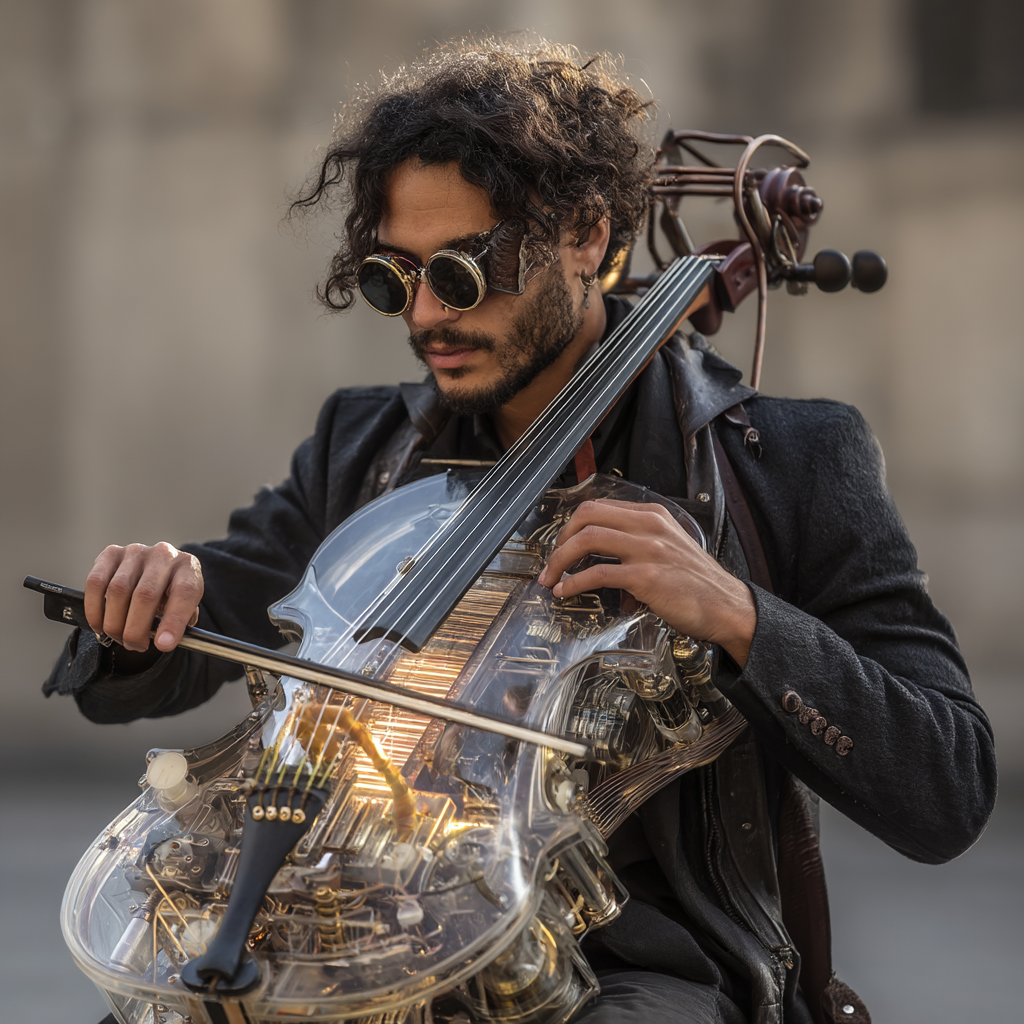Music is a universal language that can convey emotions, ideas and states. In order for this language to become understandable, musical instruments appear on the stage, creating harmony and rhythm, two essential elements of musical composition. Harmony gives structure to music by determining which sounds and chords should be combined to create a certain mood, and rhythm, in turn, controls the tempo and movement of the piece. The musician’s task is not only to choose the right instruments, but also to skillfully use their potential, creating unique sound pictures.
Harmony in music: how instruments create sound combinations
Harmony is the art of creating and combining sounds, which gives a piece of music completeness and integrity. Each musical instrument, be it strings, wind or percussion, has its own unique contribution to harmony. Harmony can be simple or complex, creating a certain mood depending on the combination of notes or chords. For example, using string instruments in combination with wind instruments helps create deeper and fuller harmony, while percussion instruments maintain the basic rhythmic structure.
The main task when creating harmony is to choose the right instruments that can effectively interact with each other, creating a sound filled with meaning and emotion. Harmony in music is not just following rules, but a real art. It allows musicians to convey the entire spectrum of human emotions, from a bright perception of the world to dark and anxious moods.
Rhythm as the basis of musical structure
Rhythm is one of the most important components of a musical composition, setting its movement and structure. Rhythm is the basis that determines how sounds are arranged in time. It can be clear and organized or loose and fluid, depending on the style and genre. Rhythm is used to create musical flow, maintain tempo, and direct the music in the desired direction.
Rhythm in music is maintained by several key instruments that play an important role in its creation. Here are the main ones:
- Percussion instruments (drums, tambourines, maracas) – create the main rhythm and accents.
- Violins and guitars – sometimes rhythmic parts are played that support the overall tempo and energy of the piece.
- Piano – can be used for accompaniment, giving the piece both a rhythmic and harmonic basis.
- Wind instruments — complement the rhythm, playing both melodic and rhythmic roles.
- Synthesizers – in modern music, they are often used to create rhythmic patterns, adding sound effects and textures.
Rhythm not only forms the basic structure of a composition, but also helps musicians convey mood and emotion to the listener, whether it is an energetic and upbeat piece or a more subdued and reflective piece.
How instruments affect the emotional perception of music
Each instrument in an orchestra or ensemble has its own unique palette of sounds and timbres, which can have a different impact on the emotional perception of music. For example, high notes of string instruments can create a feeling of lightness and clarity, while the deep sounds of double bass and tuba create a feeling of heaviness and fullness. Instrument timbre plays no less a role than its rhythmic or harmonic function. For example, the sound of a piano can convey both sadness and joy, depending on the strength and technique with which the musician performed it.
The emotional perception of music also depends on how the instruments are combined with each other. The right combination of instruments can enhance the emotional impact of a piece. When some instruments perform calm and melancholic passages, while others add accents to create tension, it creates a powerful emotional experience that touches the listener on a deep level.
Ensemble art: interaction of instruments in a group
In an ensemble, each instrument plays its own role, and their interaction creates something greater than the sum of the individual sounds. The role of each instrument in the ensemble is unique, and although there are individual parts, it is important that they all sound in harmony with each other. When music is performed by an ensemble, it is important that each musician feels part of a common whole, where every sound and chord finds its place.
Ensembles can be different: from chamber groups to entire orchestras. The coordinated work of all ensemble members allows you to create an unforgettable piece of music.. The complexity and variety of interactions between instruments in an ensemble provide the necessary harmony and rhythm, and also help musicians express their ideas and feelings through music.
Instrument playing technique and its influence on sound
The technique of performing musical instruments has a huge impact on the perception of the work. Each instrument has its own playing characteristics: for example, on string instruments, the correct position of the fingers and bow is important, on wind instruments, breathing techniques and playing the valves are important. It depends on the skill of the musician how accurately and beautifully each chord and note will sound.. Sometimes playing technique – this is not only physical training, but also the ability to convey emotions, filling the music with live sound.
In addition, the differences in playing techniques between instruments give the music variety. Some techniques require great concentration and precision from the musician, while others will allow them to be more free and intuitive in their performance.. In any case, the playing technique serves as the connecting link that allows you to create a beautiful and expressive piece of music.
In recent decades, advances in technology have significantly changed the musical landscape. Modern musical instruments are becoming more and more versatile and multifunctional.. Synthesizers, electronic instruments and computer programs are opening new horizons in music creation, allowing musicians to combine different sound elements and create complex compositions. However, despite technological advances, traditional instruments still occupy a central place in the art of music., their unique sounds and capabilities will continue to inspire and create magic in music.
Modern musicians continue to seek a balance between traditional craftsmanship and the new possibilities that technology provides. This opens up new prospects for the development of music and instrument making. The combination of old traditions and innovative approaches leads to the creation of music that sounds both in the Baroque era and in the most modern musical styles.
Making music is a world full of interactions and harmonies, with each instrument playing an important role in creating the overall picture. Rhythm and harmony, merging together, make the music unforgettable and exciting. The interaction of instruments, as well as the technique of their performance, affects the emotional perception of each work. Musical instruments, each note and each chord have their own characteristics and personality, yet they serve one great musical expression. It’s important to remember that music is not just sound, but art that conveys feelings, ideas and states.
Modern technology, of course, provides new possibilities for creating music, but traditional methods and tools remain unsurpassed. The interplay of these different worlds—tradition and innovation—continues to inspire musicians and creators to find new ways to express themselves and their ideas. Modern music will continue to evolve, but the basics remain the same: harmony, rhythm and technique of playing instruments are the soul of every work.
Traditional instruments have a unique sonic palette and expressive capabilities that are difficult to replicate using technology. Their sound conveys emotions and atmosphere that have a deep connection with cultural and musical traditions.
Modern technologies open up new opportunities for musicians in creating and processing sound, which allows them to expand the boundaries of musical art. They allow you to create complex compositions and sound effects that traditional instruments cannot convey, but the technology always blends harmoniously with live performance on traditional instruments.

